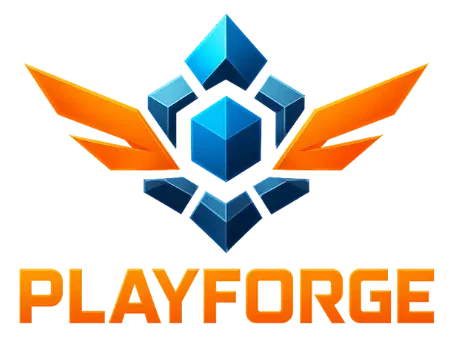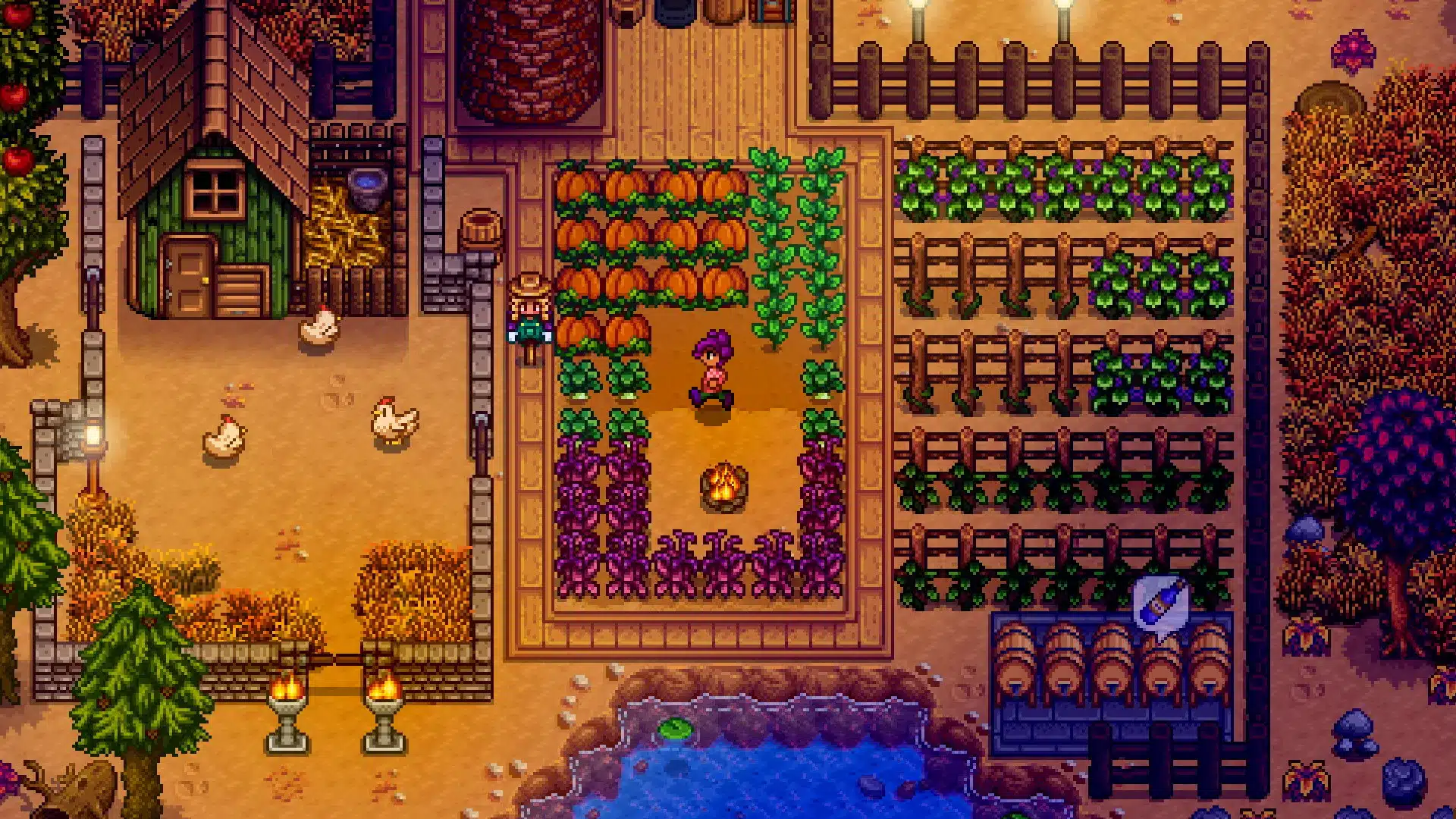Stardew Valley is a cozy life sim released way back in 2016 by Concerned Ape. It took the world by a storm then, and it’s still going strong now (and growing), even after almost ten years. What’s even more impressive — this game was developed fully by one man who had no formal training in game design, art or music.
And if you’re a little bit like me (wary of anything labelled “cozy” or anything really hyped up), you might want to know if it’s worth playing now, in 2025. Well, I’m here to help with that.
The short of it is that yes, Stardew Valley is absolutely worth playing. And the long of it? Read on to find out.
Last updated on:
Quick Facts About Stardew Valley
| Developer / Publisher | ConcernedApe |
| Platforms | PC (Windows, macOS, Linux), PS4, PS5, Xbox One, Xbox Series X/S, Nintendo Switch, PS Vita, iOS, Android |
| Release Date | Feb 26, 2016 (PC), later on other platforms |
| Genre / Mode | Farming / Life Sim, RPG; Single-player & Co-op Multiplayer (up to 4 players) |
| ESRB / PEGI | ESRB: Everyone 10+; PEGI: 7 |
| Hours to Complete | ~50 hours (main story); 150+ hours for completionists (potentially endless) |
| Price | ~$14.99 USD (varies by platform, I got it for $5 on Google Play) |
| Where to Buy | Steam | iOS App Store | Google Play | Nintendo eShop | PlayStation Store | Xbox Store |
Story & Setting in Stardew Valley
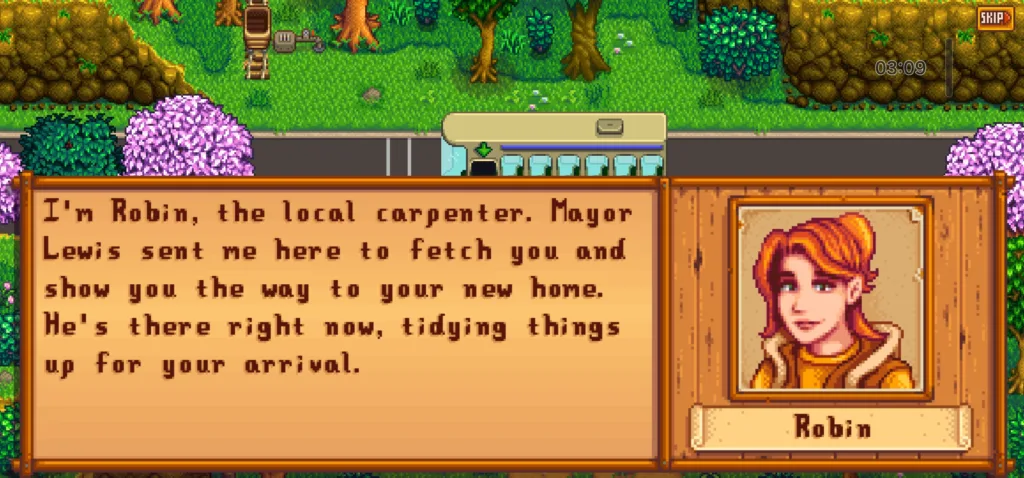
You begin your journey in Stardew Valley as a burned out employee of a large corporation (Joja, which does appear later as well). And then, you remember that your grandfather left you a letter, and in that letter gave you his farm and told you that one day, you’ll want to leave city life and enjoy some peaceful farm life.
That turns out to be true (of course), so you get on a plane and finally arrive in Pelican Town, and your brand-new-kind-of-in-shambles farm. There are friendly townspeople who all welcome you in different ways, and the unfriendly Joja corp trying to destroy the traditional country life with their money-grabbing ways.
Your job is to restore the farm and be a good neighbor, but the story also gives you an opportunity to find love and friendship, and maybe even build a family of your own.
Pelican Town itself is great — you have a few shops, a few houses (all of which you have access to, depending), a beach, the forest, etc. and more areas unlock as you play the game. It’s great to explore and might seem large at first (which it is, don’t get me wrong), but then when you learn your way around it, it becomes fun and easy to navigate.
So, overall, the story begins as almost every similar story/game begins, and the setting is pretty similar to those in other games of this genre, but what’s beyond that is so much fun.
First 60 Minutes With Stardew Valley
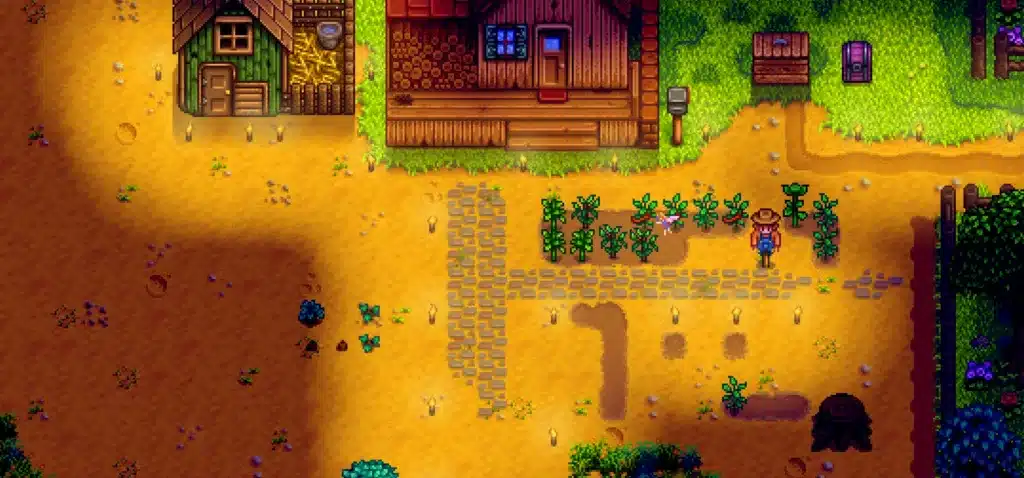
So, once you download the game and set it all up, you’ll get a chance to customize your own character. I didn’t bother much with this since I wanted to get started as soon as possible (and it’s pixelized, so the outfits, hair color/eye color, etc. don’t matter so much, at least to me). I opted to get the tutorial and the pointers because I didn’t want to get stuck googling things later.
A quick note that you can choose your farm type. I went for the standard because I wasn’t sure what the differences were. Now I believe I would have enjoyed the Riverlands or the Forest farm more, simply because I grew to like fishing a lot, but I’d still recommend playing the standard map to start with. That way you get to experience everything, and different map types encourage different things.
Once the story was done, it was time to get farming. I really love this part of Stardew, maybe because farming games were a favorite when I was a kid (if anyone remembers Alice Greenfingers, that’s what I loved). It takes a bit to get used to it — I may have made a few holes I didn’t want to make — but that could be just because of the fact that I played on mobile, so the controls may not be exactly as they are on PC or other platforms. Or as convenient.
Either way, I managed to plant some seeds, which are expensive, by the way. I thought I bought one bag of seeds, turns out I bought *a* seed.
I interacted with some of the villagers as well, which was fun (one of the first quests is to meet them all). Some are surprisingly rude, but most are nice. I roamed around, explored, did some foraging (which is a great way to make money early on and later), etc.
Overall, I feel like that first hour is really great at hooking you. You get invested into your little farm and want to play more. For a cozy game, this one is pretty hard to quit.
Stardew Valley Gameplay & Mechanics
Core Loop & Progression
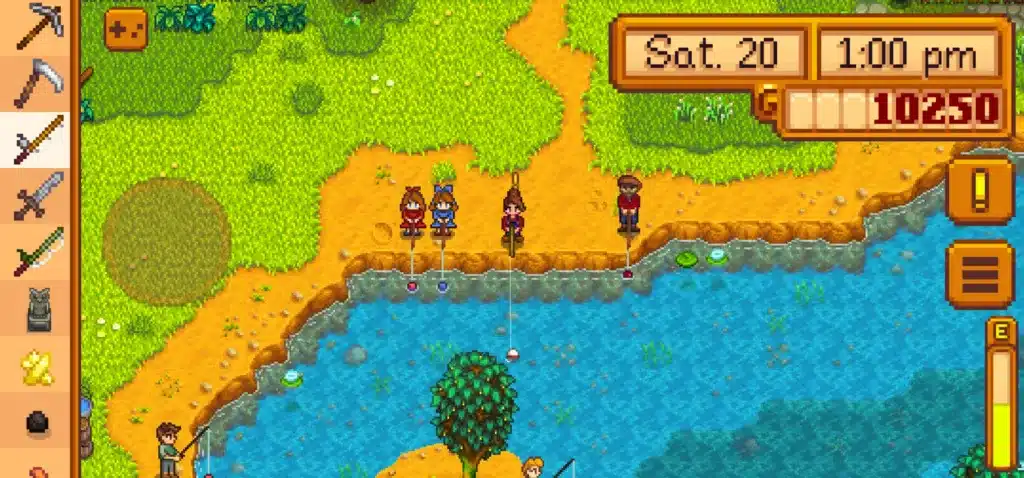
At its heart, Stardew Valley is all about that addictive day-to-day rhythm: wake up, decide if you’re tending crops, fishing, mining, or making friends in town, and then balance all of that against your limited stamina bar and the ticking clock.
It sounds simple, but trust me, it’s not. I can’t tell you the number of times I needed more hours in the day to complete things — quests, mining, whatever. So yeah, you have to decide what you want to do because there’s no way to do it all in one day. The only complaint I have here is that I wish there was an easy way to teleport. Yes, there are the totems but you can only use them once and you consume them, which seems like a waste of resources unless you’re in danger of collapsing or dying.
I felt like I explored a ton in that first season, and I would have loved to have the option to just teleport to the area I needed instead of having to walk around. But I guess it’s meant to be cozy and slow, so I’ll forgive this.
Player progression is organic and you’re not railroaded into one playstyle. You can specialize in farming and become a millionaire through crops, go deep into mining and monster slaying for loot, or just befriend everyone and unlock cozy cutscenes.
I, personally, hate mining and slaying those little slimes, so I avoided that as much as possible (unless I really need the resources) and the game let me. I’m also not big on interacting with the townspeople. Not that I don’t care, it’s just that I feel there’s never enough time for that. But the game lets me, and I have fun just foraging, doing the quests, fishing and farming.
Multiplayer & Online Features
The addition of co-op multiplayer honestly transformed Stardew Valley. Up to four players can share the same farm, split tasks, and basically live out the dream of running a little digital commune. It’s one of the few farming sims where multiplayer genuinely changes the flow.
The grind of early game farming becomes way more manageable, and sharing dungeon runs in the mines or fishing trips adds this casual, goofy layer of fun that’s perfect with friends. There’s no PvP or competitive angle (thankfully), but the co-op itself is polished and stable.
Controls & Interface
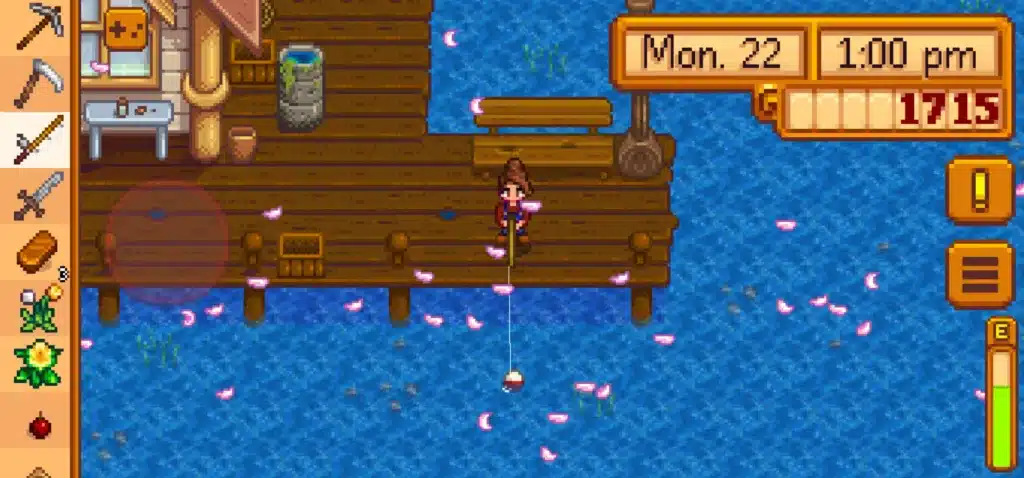
Okay, so — I played this on mobile. It was just convenient for me because I always carry my phone around and the kids are taking over my Steam Deck with increasing frequency. Plus, I find my gaming motion sickness started acting up even on the deck, and I just wanted to experience this game without having the horrible nausea tied to it.
What I can say is that it works well on mobile. There are some quirks due to the smaller screen (which I imagine is also an issue on the deck and Switch). For example, moving forward into another area can be fiddly because the menu buttons are right there (when I want to leave my farm), but I turned on the joystick option and it worked really well. I ended up using a combo of that and just tapping around.
I assume it’s much better on PC because it was built for that, but I’m not sure if I’ll try it there, because one, I’m not sure I want to buy it twice, and two, it’s really addictive and I’d never get any work done.
Combat & Exploration
If there’s one weak point in the game, it’s combat. The mines and later Skull Cavern are fun to explore, but swinging your sword feels a bit floaty and repetitive. Don’t get me wrong, there’s some tension when you’re low on health and far from the exit, but compared to the farming side of things, combat just doesn’t hit the same highs. Games like Rune Factory definitely do action-RPG combat better. That said, it’s serviceable. It gives you something different to do, and the loot is worth it. I just genuinely had no interest in going through the dungeons and fighting.
Life Sim — Characters, Romance, & More
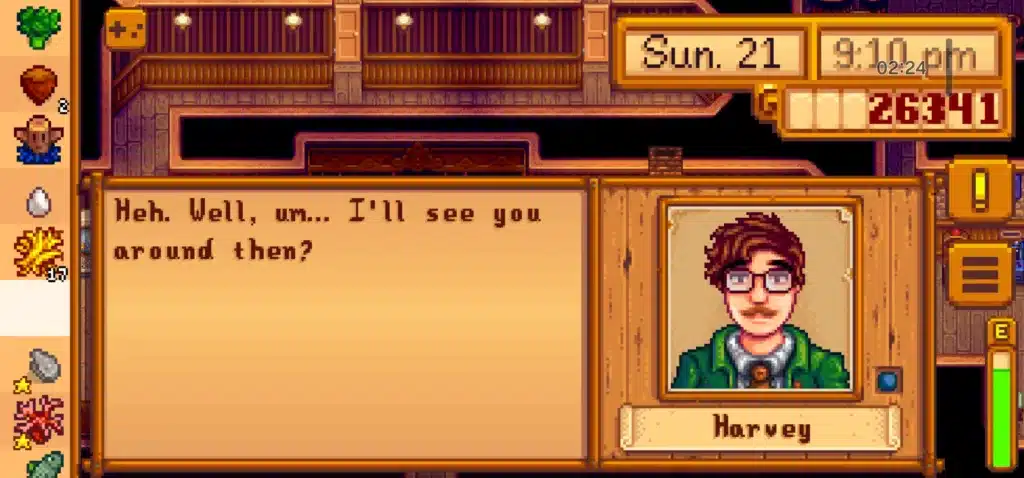
One of Stardew Valley’s biggest draws is its cast of characters. Each villager has their own personality, backstory, and daily routine and the town goes on about its business whether you interact with them or not, which makes it all the more realistic and entertaining.
Some characters are instantly likable (I really liked Clint, for example, even if he is a shy, and kind of bitter man), and I think pretty much everyone instantly dislikes Haley, who appears vapid at first, but warms to you if you give it a try. And don’t get me started on Shane, who’s rude well into the friendship (I made it my mission to make him nicer).
Dialogue isn’t as deep or branching as in a full-blown RPG, but it’s charming enough to make you care.
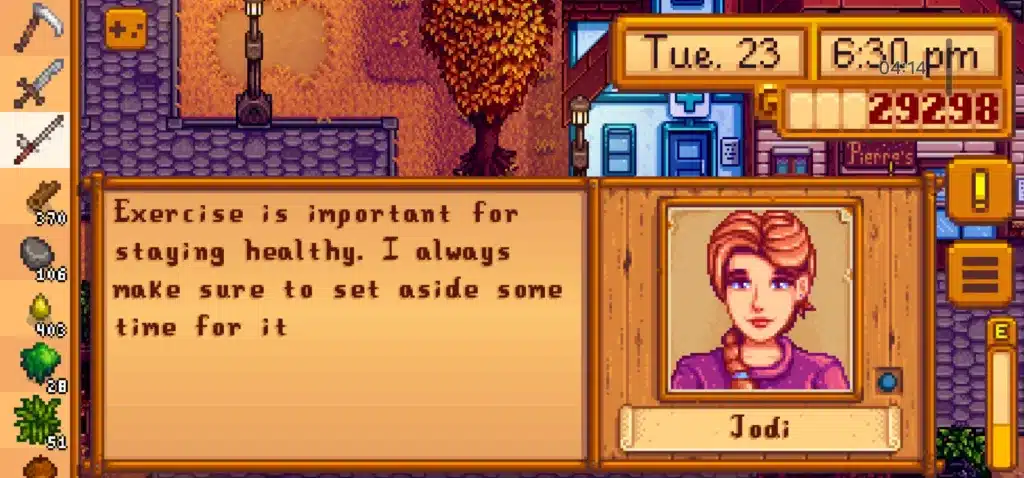
Romance is a huge part of the experience. There are 12 marriage candidates (6 male, 6 female), and the game doesn’t restrict you by gender, so you can romance whoever you want. Building relationships involves giving gifts, talking regularly, and hitting milestone “heart events” that flesh out each character’s story.
Marriage itself isn’t just cosmetic either. Your partner will move in, help with chores, and sometimes even cook for you. You can also have kids if you want, though like a lot of aspects of Stardew, it’s more about the vibe than deep mechanics.
I didn’t get that far myself, and I doubt I’ll actually want to “marry” anyone in-game, but I do enjoy making friends with some of these characters and it’s a great aspect of the game.
Replayability
This is where Stardew Valley absolutely shines. Every playthrough can be different depending on your farm layout, the skills you focus on, and which townsfolk you romance (or don’t). Mods extend that replay value even further, from tiny QoL tweaks to massive content overhauls. And the fact that ConcernedApe keeps updating the game years after release means there’s always an excuse to come back. For me, Stardew falls into that category of “forever games”. You might put it down for a while, but you’ll always pick it back up again.
Graphics, Art & Sound
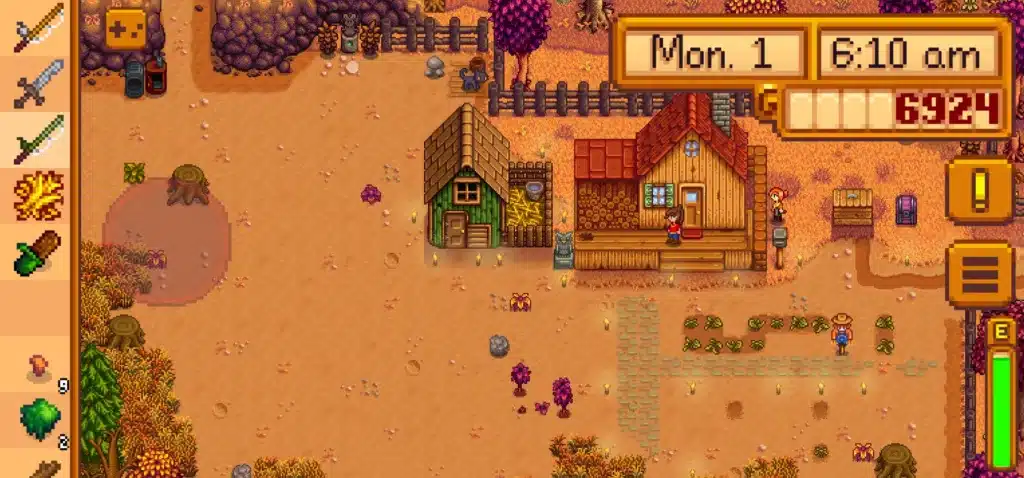
Stardew Valley leans into charming pixel art rather than realism, and honestly, it’s the perfect fit. It’s not flashy, but the 16-bit-inspired visuals give it a timeless quality. It’s closer to Harvest Moon: Friends of Mineral Town than anything modern like Animal Crossing: New Horizons. The seasons feel distinct thanks to clever use of color palettes, and character designs, while simple, have just enough expression to make the townsfolk feel alive.
Performance-wise, Stardew is rock solid. Load times are snappy and I never experienced a crash.
Each season comes with its own soundtrack, and I loved that. Sound effects are crisp and satisfying, from the “pop” of harvesting crops to the gentle splashes of fishing. There’s no voice acting, but the localization is well-polished, and the text feels warm and natural.
Monetization & Microtransactions
One of the most refreshing things about Stardew Valley is how little it asks of you once you’ve bought it. There are no in-game stores, no cosmetic packs, no sneaky DLC that locks core content behind an extra fee. You pay for the game once, and that’s it—you get the full experience, and it’s a lot of game for the price.
The closest thing to “extra content” is fan-made mods, and those are entirely free (with the option to support creators if you want).
Stardew Valley Pros & Cons
Stardew Valley is one of those rare indie games that nails both charm and depth. It’s incredibly rewarding if you enjoy slower-paced, relaxing gameplay loops, with just enough variety to keep you hooked for hundreds of hours. That said, if you’re looking for fast action or complex combat, it might not scratch that itch.
Pros:
- Deep, flexible core gameplay loop (farm, mine, fish, romance, repeat).
- Cozy pixel art style with distinct seasonal vibes.
- Fantastic soundtrack that never gets old.
- Huge replayability thanks to player choices, mods, and updates.
- Multiplayer co-op adds a whole new layer of fun.
- No microtransactions—buy it once, own it forever.
Cons:
- Combat is serviceable at best, repetitive at worst.
- Menu navigation can feel clunky on mobile compared to PC.
- Slow-paced progression might not appeal to impatient players.
- Limited character dialogue depth compared to full RPGs.
Final Verdict
Stardew Valley is one of those rare games that truly has something for almost everyone. If you’re a casual player looking for a cozy escape, it’s perfect for winding down after a long day. If you’re more of a hardcore gamer, you’ll still find depth in its progression systems, min-max farming strategies, and challenging late-game mines.
From a value perspective, it’s almost absurd how much game you get for the price. With hundreds of hours of replayability, free content updates, and zero microtransactions, it’s easily one of the best deals in modern gaming.
Simply put: if you’ve ever been curious about farming sims or you’re looking for a cozy-yet-addictive game to sink your teeth into, Stardew Valley is a must-play.
Final Rating: 9.5/10 🌟
FAQs
Yes. No hesitation. For a one-time purchase, you get hundreds of hours of cozy, addictive gameplay. Farming, fishing, mining, making friends in town, everything is satisfying, and there’s enough depth to keep you hooked whether you play casually or dive in hardcore. Honestly, it’s one of those games you can easily lose months in without noticing.
It depends on how you define “complete.”
— Main story goals: About 50–60 hours.
— 100% completion: 150–200 hours, depending on how much you want to explore and upgrade everything.
Most players end up spending way more than that just enjoying the daily grind, discovering secrets, and perfecting their farm.
Yes! A big update (version 1.7) is in development, but don’t expect it tomorrow. Details are scarce, but ConcernedApe has confirmed it’s coming. The game has already received free content updates over the years, so even without DLC, it’s constantly evolving.
Stardew Valley runs on basically anything you’ve got:
— OS: Windows 7 or later
— Processor: 2 GHz
— Memory: 2 GB RAM
— Graphics: Any card with 256 MB VRAM, Shader model 3.0+
— Storage: 500 MB free space
Even laptops can handle it without breaking a sweat.
Yes! Up to four players can join the same farm, split tasks, and share progression. Co-op adds a ton of fun, from fishing trips to dungeon runs, and it never feels tacked on. Perfect for friends or family looking for a chill collaborative experience.
Pavle is the founder of PlayForge and its lead writer and reviewer, covering PC, PS5, and mobile games, a with a focus on RPGs, MMOs, FPS games, and more. He’s been gaming since the PS2 days and now writes in-depth reviews and guides to help players find their next obsession and get gaming insights from real players, not just critics. His reviews are honest and transparent, but he always tries to stay positive, because in his opinion, almost any game can be fun if you look at it the right way.
In his free time, he likes to (obviously) play more games, spend time with his family, theorycraft about various media with his wife, and watch anime. So yes, he’s a complete nerd, even if he’ll never admit it.
